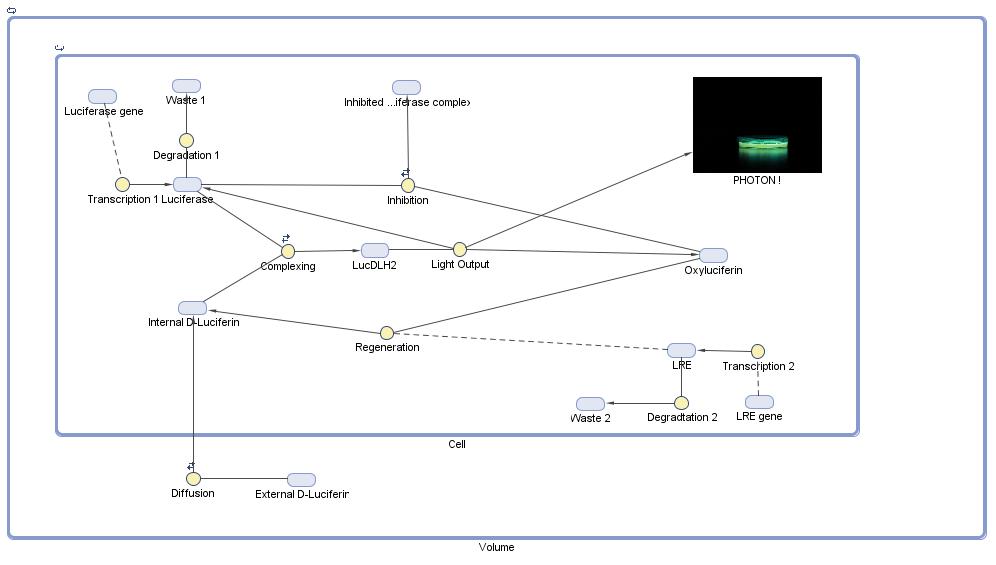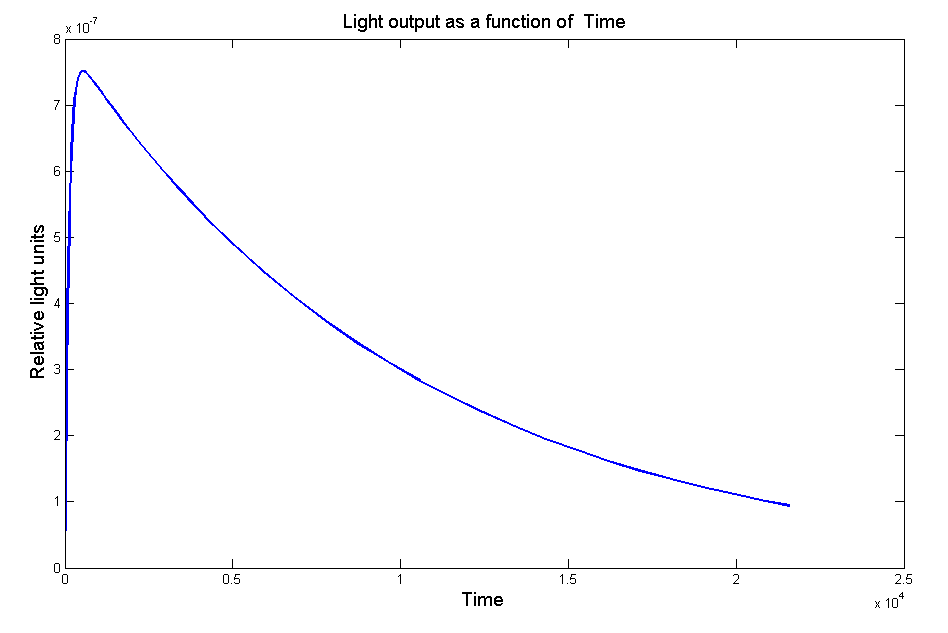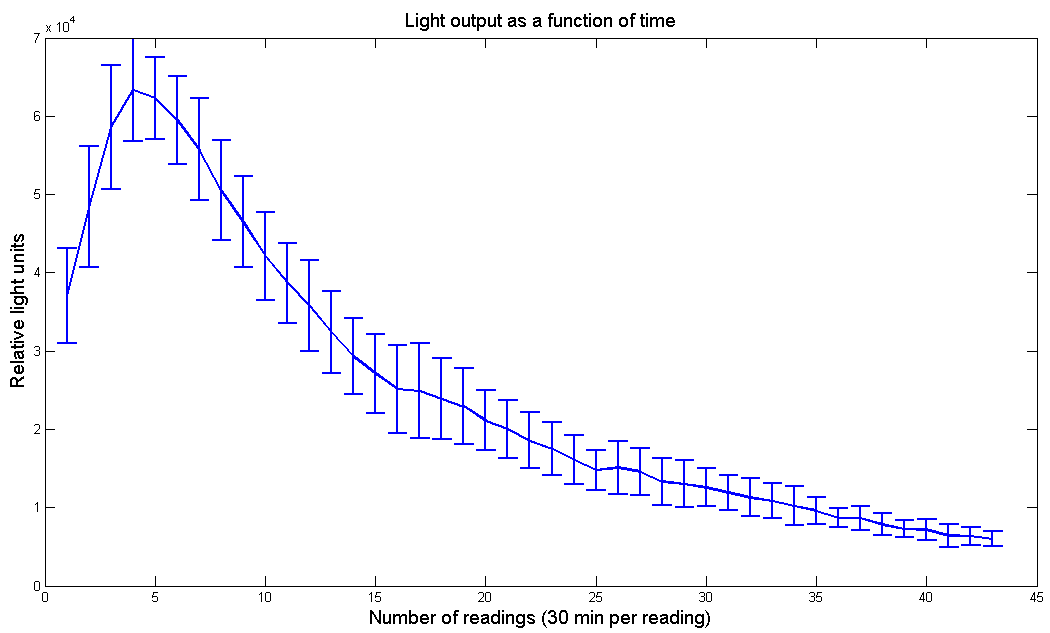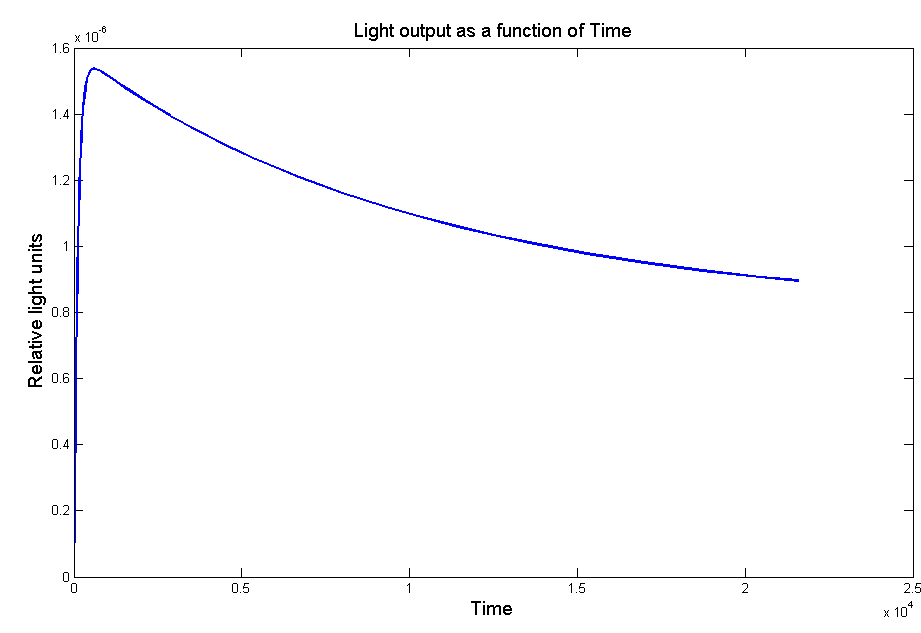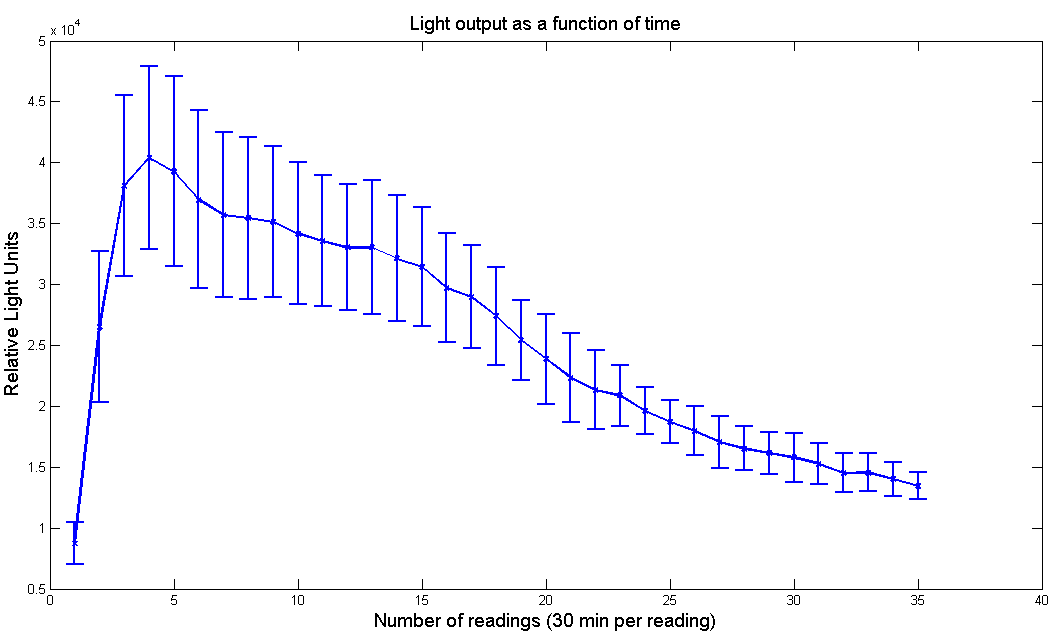Team:Cambridge/Bioluminescence/Firefly Modelling
From 2010.igem.org
| Line 3: | Line 3: | ||
<html> | <html> | ||
<div style="float:right"> | <div style="float:right"> | ||
| - | <a href="http://cambridgeigem.org/igem10/In | + | <a href="http://cambridgeigem.org/igem10/In Vivo Cycle.xml" style="display:block; width:300px; padding-top:100px; margin-left:30px; margin-bottom:30px; background-image:url('https://static.igem.org/mediawiki/2010/7/76/Downloadsbml.png');background-repeat:no-repeat; background-position:top left;">Download model in SBML format |
</a> | </a> | ||
</div> | </div> | ||
Revision as of 02:16, 27 October 2010

We used the [http://www.mathworks.com/products/simbiology/ Matlab Simbiology toolbox] to model the cycle. A diagram of the model we developed can be found below:
Some parameters were taken from literature. However there was no clear data for others, such that we were only able to define some parameters in the light of experimental data.
While attempting to optimise our system we modelled the effect of Luciferin Regenerating Enzyme (LRE)
We modelled the system both with and without the effect of the Luciferase Regenerating Enzyme (LRE.) The 4 Figures below show a comparison the model and our data for both cases.
Our model suggested that the LRE would make light output increase faster, peak higher and decay more slowly. These were all qualities which suited us.
 "
"
